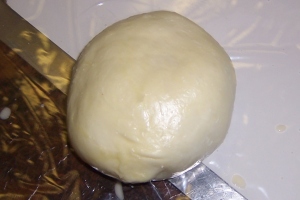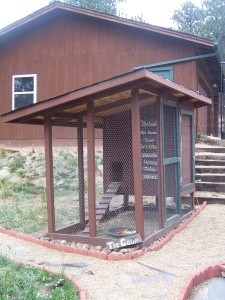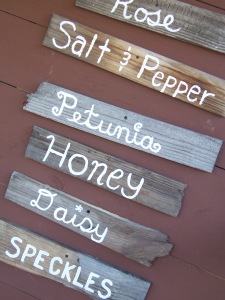There is a member of our Farm Family that definitely doesn’t get the recognition he deserves. The animals that are producing our meat, milk, and eggs are often on the forefront of farm discussions and blog posts. However, in my opinion, our farm dog is the most important animal on the farm AND the hardest worker.
Tundra joined our family in the spring of 2005 as an adorable puppy. His owners had him in a box outside of a grocery store and he was the last puppy left from the litter. We immediately fell in love with him and took him home with us.
We call him our “Heinz 57” dog because he is a mixed breed. We were told he had Chow and Boarder Collie in him.
When we first got him we didn’t have a farm and he became my husband’s work buddy. My husband is in construction and would take him to work at the different job sites. He has always been excellent with the kids, from newborns all the way through to our current oldest, who is almost 10. He is also great with other dogs and cats.
One strange thing about him, that we had never encountered before in a dog, was that he has never really liked being inside. He would check out the house for a few minutes, maybe lay down for a little bit, and then desperately want back out. So he has spent most of his life outside, unless it was bad weather.
When we moved to the new farm the barn and cow pen became his domain. He is an awesome alarm dog and VERY protective of the livestock. We know that if he is barking there is something up and we can trust him to protect the livestock and do all he can to tell us there is something going on.
He has treed a bear that was trying to break into the chicken pen; chased off numerous bears, coyotes, and foxes; warning barked when there was a mountain lion on the property, chased off a few bobcats, killed several pack rats over the years that were wanting our eggs and baby rabbits, and even saved two baby rabbits’ lives on two separate occasions (no kidding!). He was also ganged up on and attacked by 3 coyotes once (there was another dog with him so it was 3 on 2). Luckily, my husband was there within a few seconds and was able to scare the coyotes off of the dogs before there was too much damage done.
What is so amazing to me is that this dog would kill a wild rabbit or a wild bird, but he seems to know that the livestock animals are important to us and he therefore will protect a baby rabbit, adult rabbit, chick, or chicken and not kill them. It isn’t something I believe you can really train into a dog as much as it is just in their nature to care about what they know you care about. And he definitely has that very special characteristic in him.
I know I don’t have to worry with Tundra on the job out at the barn. I know he will let us know, day or night, if there is trouble and he will do his best to protect our livestock and property. He is also very protective of the kids and I know they are safe with him outside with them. He is amazing and is a priceless addition to the farm. I don’t know what we would do without him.






















